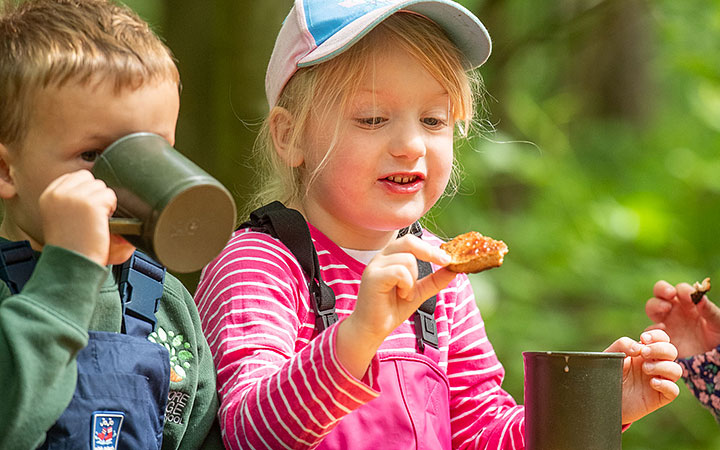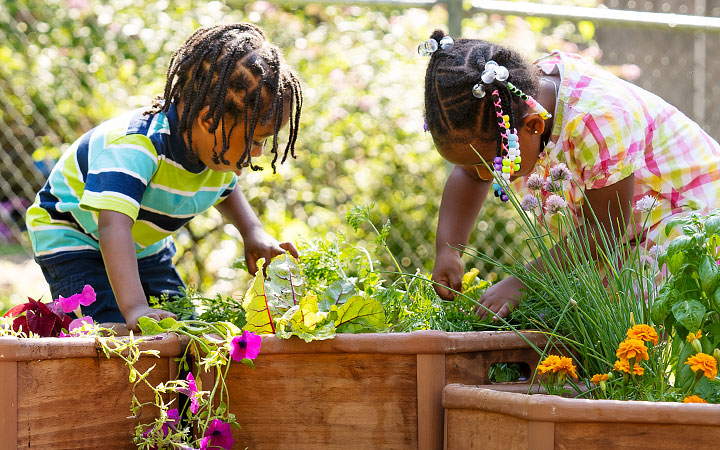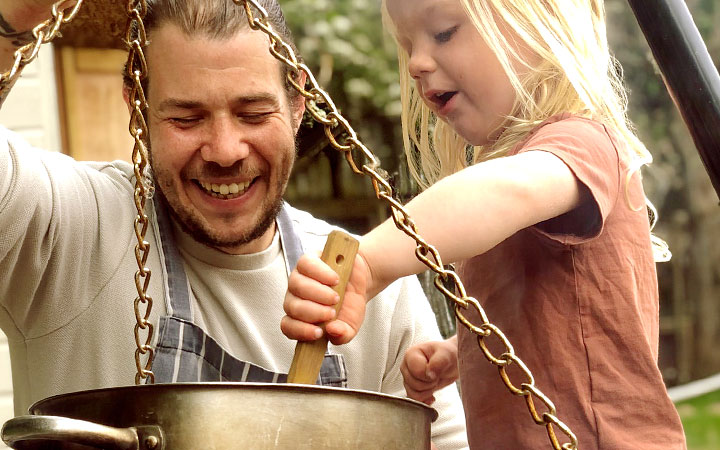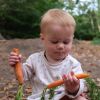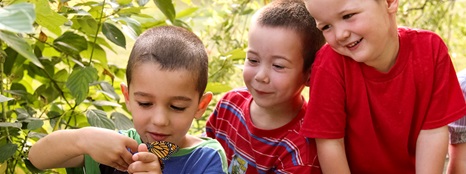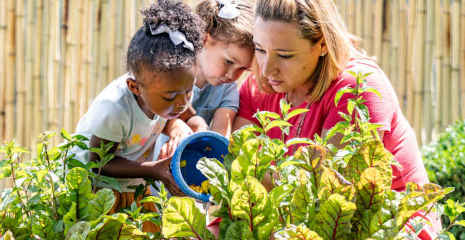Wild cooking
| September 2023"I think my food is better when I help make it. I don’t know why, it's just better after I've cooked it.” Harlie
Introduction
The importance of “wild cooking” and the benefits it has for children in Early Years cannot be overstated. Cooking outdoors enhances everything about the experience and enjoyment of food. It creates a new level of learning as the children begin to understand what goes into preparing and creating food. This allows them the chance to broaden their knowledge of skills across the whole curriculum. Following instructions, applying the safety rules, practising maths, reinforcing hand and eye coordination, encouraging large muscle skills as well as communication and language enhancement are all embedded within the outdoor cooking processes.
Safety tips and hints
- Create a fire circle with the fire pit in the middle
- Have a clear entrance space into the circle
- One-on-one within the circle when cooking
- Child kneels by fire (on one knee) to maintain a balanced stance
- All long hair tied back and no loose, flapping clothing
- Use long-handled tongs
- Always have access to running water or a bucket of water available as a precaution
- Raw meat should be prepared ahead of time by an adult, never by the children
We know there are risks with all outdoor activities and cooking over an open fire is no exception. However, with sensible rules firmly in place it can be both safe and enjoyable, and not as daunting as you may first think.
Growing your own food
Many settings have a little garden space available to plant and grow vegetables, but even one or two large plantar pots can create possibilities for a fire circle and grill. Courgettes, cherry tomatoes, potatoes, radishes, carrots and runner beans are all simple to grow and can be harvested by the children. Simply grill them or add to soups, curries and stir fries. Try a herb box and plant parsley, chives, oregano, basil and mint. Keep it in a sunny spot and let the children snip off sprigs to add to whatever is bubbling on the fire.
The process
There’s something so welcoming about a fire circle with a fire pit in the centre. A clearly designated entrance minimises risk as the children enter and are comfortably seated on the wooden benches. The consistent boundaries and routines develop confidence and healthy risk awareness. With careful oversight and training, children can be involved in many of the activities that go into preparing and cooking their food, from building a fire, to flipping toast with long tongs. As the children take it in turns to add ingredients, stir the pot, prepare the handwashing station or set the outdoor tables, the group of children become a team with a common goal. Each individual also has the opportunity to explore their own strengths and talents, and with time everyone finds their role to play in this important drama.
The benefits
We all know that when children are involved in the process they become invested in the activity and eager to partake in the outcome and will sample flavours and textures that may be new to them. As these foods become familiar they may well also become favourites and healthy nutritious eating habits are reinforced. Children involved in cooking their own food have been observed to go from only eating bread and cheese to eagerly trying new foods.
Relationships are strengthened through teamwork, and children serving food and drinks to each other discover things they never knew about their friends. Enjoying a meal together is an experience many children miss out on that contains its own learning opportunities.
Recipe ideas
- Roasted courgettes: toss with olive oil, garlic, salt and pepper, then grill
- Sausage rolls: cut ready rolled puff pastry into squares and wrap around sausages, then cook slowly on the grill turning occasionally or on long skewers
- Soup: boil water with added stock cubes, then add vegetables and potatoes of your choice, cut up into cubes and cook till soft
Conclusion
Education in the early years can happen through out-of-the-box activities like Wild cooking. Maths, education on sustainability, cultural education, communication skills and teamwork skills will be let loose around the fire, mingling freely with the mouth-watering smells and the joy of the children. Invested in their own learning in this way, the children will flourish. Flavour the daily ritual of eating with new spice and turn it into a powerful learning tool.

